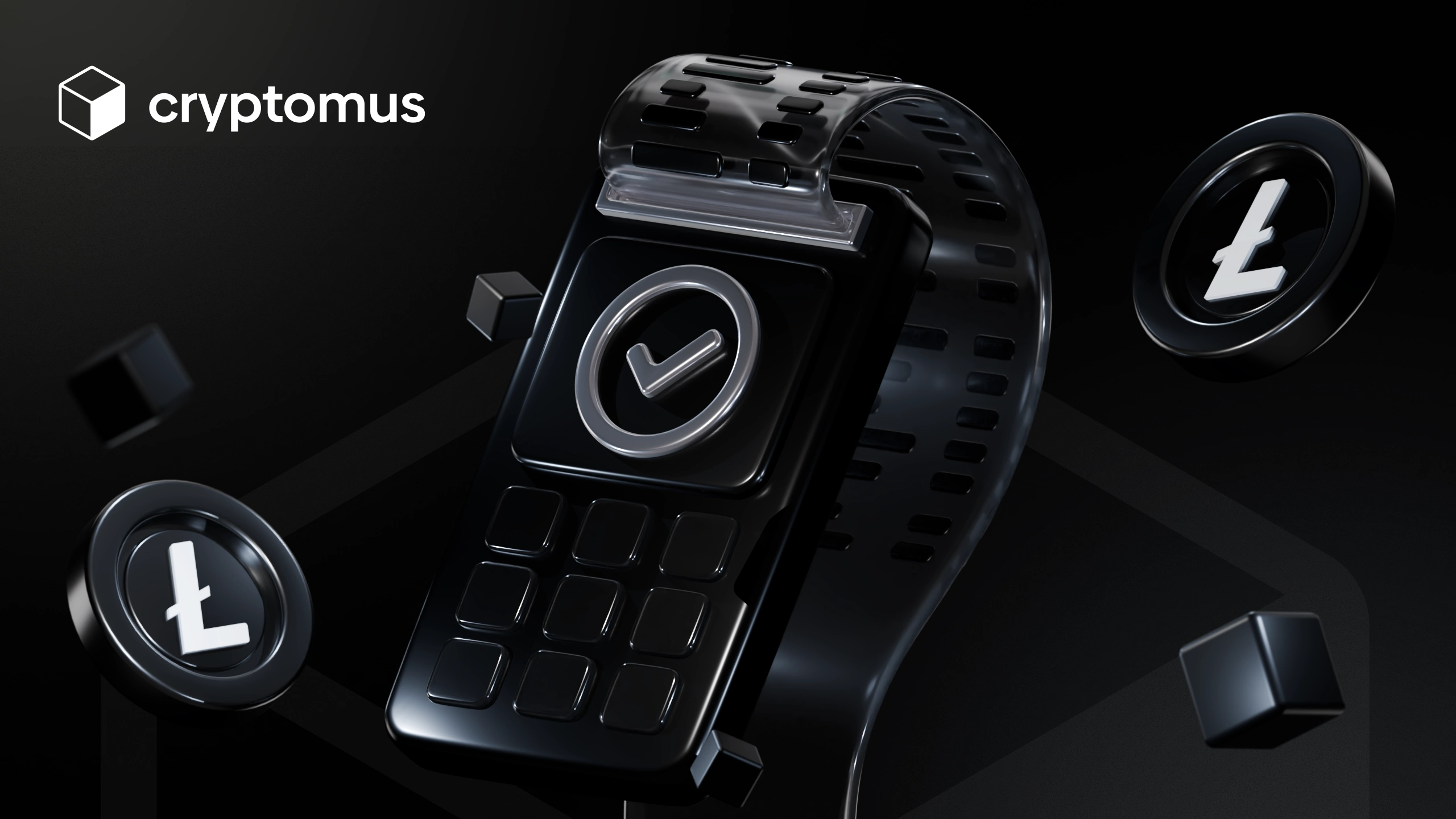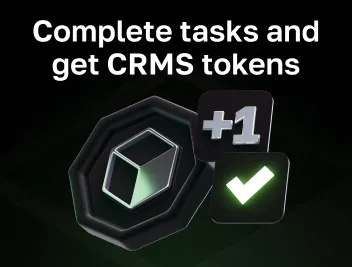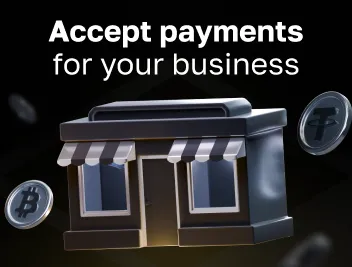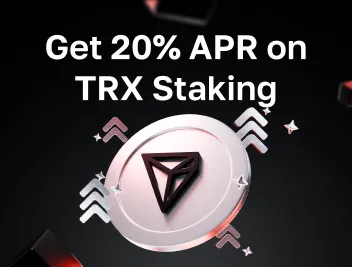
How to Accept Litecoin As A Payment On Your Website
Litecoin is a great cryptocurrency innovation which captures a million of users’ hearts. This coin is widely used for different purposes, from investing to making purchases, since it offers high liquidity, fast transaction speed, and low fees to acquire.
Today, we’ll talk about Litecoin, the elder brother of Bitcoin. How useful it is for making payments, and how to set up your own Litecoin payment gateway for various business goals. All questions will be answered in this article!
Litecoin As A Payment Method
Litecoin (LTC) is a decentralized cryptocurrency that was created in 2011 by Charlie Lee, a former Google engineer. It is designed to be a faster and more lightweight version of Bitcoin, with a lower transaction time and lower fees.
Litecoin uses a different encryption algorithm than Bitcoin, known as Scrypt. So, such improvements make it possible to process a higher number of transactions per second, which is one of the reasons why Litecoin is often referred to as a "lite" version of Bitcoin.
Litecoin has quickly gained popularity among cryptocurrency users due to its impressive features that make it very easy to use for various operations, investments, trading, and even as a payment method. The last one is especially surprising, as with a growing number of merchants and businesses accepting LTC as a form of payment, regular customers had a more diversified variety of LTC use cases.
A LTC payment method allows customers to use their Litecoin assets to pay for different goods and services, or just to transfer them to another user. It acts as one of the most popular crypto payment methods compared with other widely used cryptocurrencies.
Why Should You Accept LTC Payments?
Due to its value, market position, and capitalization, Litecoin, literally, has become a widely-used payment option for those seeking profitable and convenient opportunities to pay with crypto. You should actually accept LTC payments due to these significant benefits:
-
Convenient cryptocurrency payments, which are faster and cheaper to transact, will significantly save your and your client's time, making the payment process more cost-effective and less time-consuming. Moreover, Litecoin transactions are often considered the cheapest ones compared to credit or debit cards or other traditional payment methods;
-
Broaden the customer base by providing them with more varied payment options. Additionally, accepting LTC may greatly attract people who prefer using digital currencies over traditional ones and can position a business as innovative and forward-thinking, appealing to tech-savvy consumers;
-
The cryptocurrency sphere is broadless, so it allows everyone to be in touch with each other, transferring funds, communicating, and making purchases even without being in physical proximity. Nowadays, if you’re using crypto for your daily purchases, you’re a part of the whole crypto community. Besides Litcoin, you can learn more about best cryptocurrencies for payments to stay up-to-date with the latest crypto payment trends.

How To Accept Litecoin Payments?
As we’ve already noticed all the benefits of implementing Litecoin into your business, let’s explore the process more closely. To make Litecoin payments work, follow these steps:
-
Find a reliable Litecoin gateway;
-
There create your cryptocurrency wallet, enable 2FA, and pass the KYC procedure to get the full functionality, protect yourself and your funds as well;
-
Get your crypto wallet address and share it with people who want to send you LTC;
-
Integrate a Litecoin payment gateway into your business’s website or store;
-
Monitor your receivings. In case of strange activity, immediately notify the platform's support.
How To Set Up A Litecoin Payment Gateway For Your Business?
If you want Litecoin to become a part of your business processes, then Cryptomus payment gateway is here to help you with this! To accept cryptocurrency payments, including LTC ones, with ease and convenience. All you need to do is described below:
-
Sign up for a Cryptomus account if you don’t have one. You can choose any suitable method of registration: using a phone number, email, or doing it directly via Telegram, Apple ID, Facebook, or by linking an account to your Tonkeeper wallet.
-
After creating your account, the first step must be enabling two-factor authentication (2FA) and setting up a PIN code for added security of your personal data and funds. By the way, if you want to accept LTC as a business, then you certainly need to create a Litecoin business wallet that will definitely be helpful in crypto payment acceptance. To start using it, just pass the KYC (Know Your Customer) procedure.
-
Now, it’s time to choose the preferable integration payment option. Cryptomus provides various of them, including API, e-commerce plugins, etc. Detailed documentation is provided for an effortless integration process. You can also find the comprehensive guides and instructions to the plugins’ setup on the Cryptomus blog.
-
After you've finished the process, it's crucial to test the payment system. Make a few crypto transactions to assess the interface and estimate terms. Once you're satisfied with the functionality, take some time to explore additional Cryptomus features like the auto-converter, invoice management, WhiteLabel, etc.
-
The last one that is left is your necessity to get your customers into the course of fact that you’re already able to accept LTC and educate them to interact with the new payment options correctly.
Thoroughly check the first test transactions to be sure that all processes operate smoothly, and if you encounter any issues, the Cryptomus customer support team is readily available to assist you until your integration is successfully completed.
Is It Safe To Accept LTC?
If we speak about Litecoin safety, this cryptocurrency is generally considered to be secure. It uses a Proof of Work consensus mechanism similar to Bitcoin, which involves miners validating transactions and adding them to the blockchain. Litecoin also employs the Scrypt hashing algorithm, which is designed to be memory-intensive and resistant to certain types of attacks. This way, LTC has gained respect and authority among many users worldwide. Most crypto enthusiasts position it as a successful alternative to Bitcoin, especially since Litecoin is significantly cheaper than its “older brother”.
We hope this article was handy for you, and now you can improve your business strategy by adding new innovative payment options. Accept cryptocurrency with ease!
Rate the article








comments
0
You must be logged in to post a comment